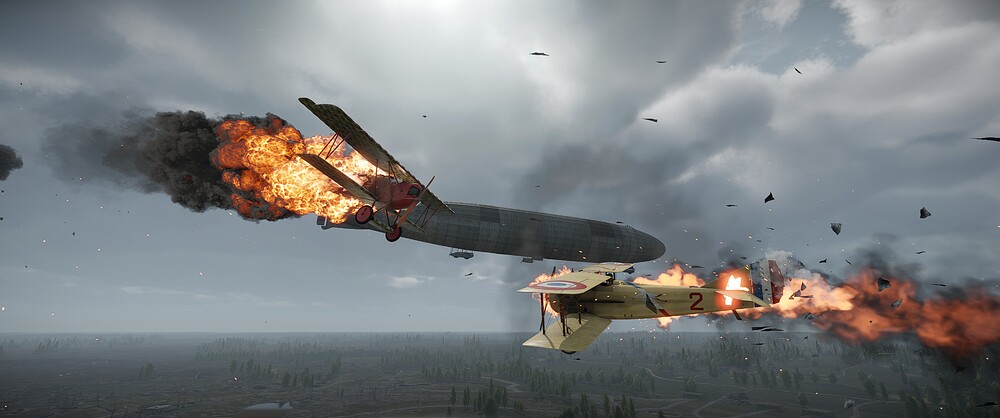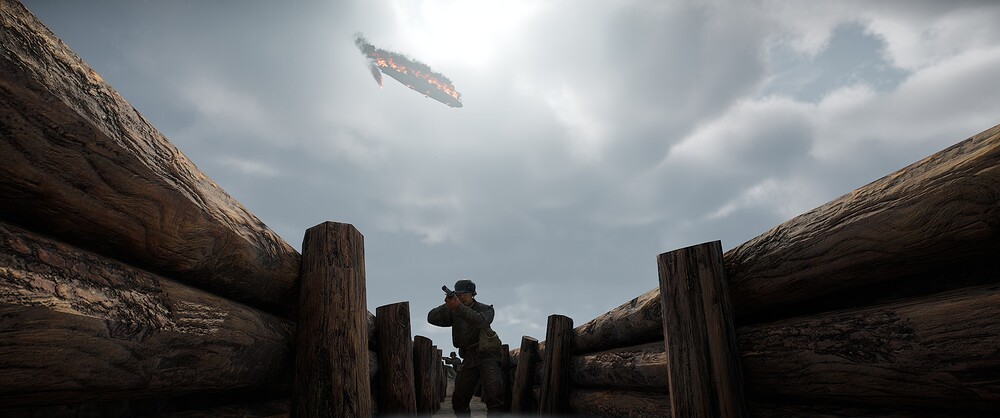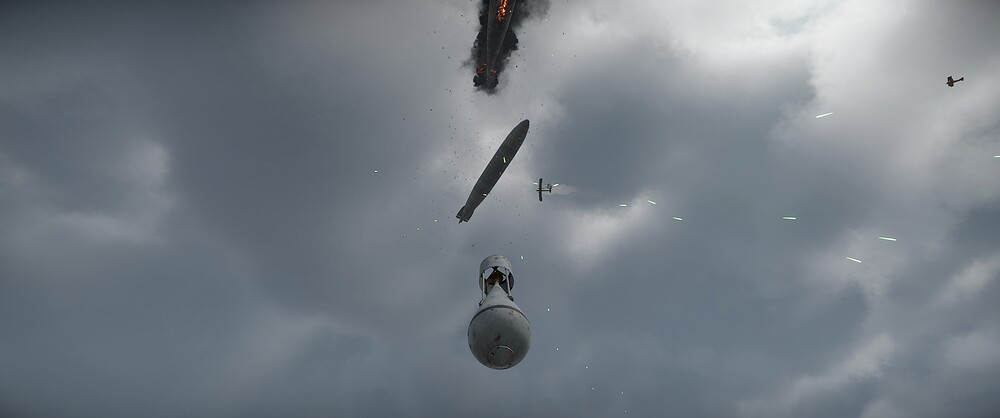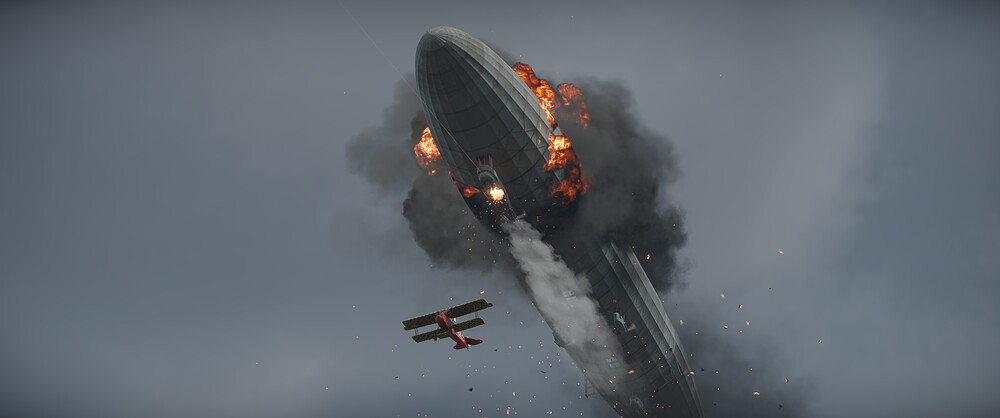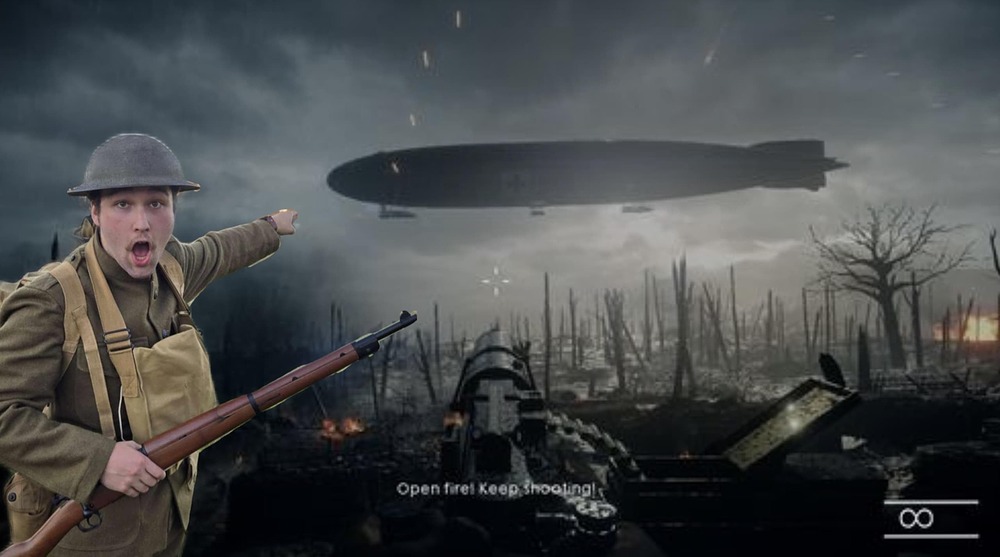- Yes
- No

The L 30 in flight.
After having played the Great War event, I feel like there is a missed oppotunity for adding an entirely new type of vehicle into the game; airship aka zeppelins.
Since the LZ 62 (L 30) which were featured in the event were best known as the most successful vehicle of its type, along with the fact that this vehicle is already modelled in-game for the event, I would like to make a suggestion for its permanent inclusion into the game.
History
Spoiler
The LZ 62 was the first of the R-class zeppelins, first developed in mid-1915. The so-called Grosskampftyps class (lit. “super airship”) was designed to be significantly larger than its predecessor in order to fly higher at a higher altitudes, further away than any aircraft could reach at that time.
At the time of its construction, the LZ 62 was the world’s largest zeppelin, as well as the fastest. Capable of top speed of 103 km/h.

The starboad side gondola of the LZ 62.
The LZ 62 is notable for being the first airship to feature a side gondola. These gondolas were mainly used to house one of the engines as well as the defensive gunner.
Speaking of armament, the LZ 62 is armed with ten 7.62 mm MG08/15 machine guns. Three on the bow platform, two each in driver’s gondola and rear gondola, and one each in each side gondolas and the stern behind the tailplane. The airship is capable of carrying up to 7,600 kg of bomb payloads, in the form of 8 x 300 kg explosive bombs, 40 x 100 kg explosive bombs, and 120 x 10 kg fire bombs.

The LZ 62 flying above the office of Peter Strasser, chief commander of the Imperial German Navy Zeppelin corps.
After being completed in May 1916, LZ 62 assigned to the Imperial German Navy zeppelin corps that month, when it received the technical designation “L 30”.
The LZ 62 is best known as the most successful airship of World War I, having conducted 31 recon trips and 10 bombing runs, and dropped a total payload of 23,305 kg of bombs. Among these were the major bombing raids on London in September 1916. During the raid, the defending Royal Air Force deployed numerous night fighters armed with incendiary rounds to counter the raid, which resulted into several airships, including LZ 62’s sister ship LZ 72 (L 31) being shot down. These were the sign of the end of the usage of airship as an active combatant.
Years later, the LZ 62 were deployed on the eastern front to conduct bombing raids on various Russian Baltic ports. However, she would later be decommissioned on the November of that year.
The engine gondola of the LZ 62 in Belgian Royal Military Museum.
After the war, the LZ 62 was given to Belgium as a part of reparations in 1920. However, due to the lack of suitable facility to house and maintain such a large airship, a decision was made to scrap the airship that year. Only the engine gondola of the LZ 62 were preserved, and it is on display at the Belgian Royal Military Museum.
Specifications
Spoiler
- Length: 198 m (649 ft 7 in)
- Diameter (max.): 23.9 m (78 ft 5 in)
- Gas volume: 55,000 m3 (1,900,000 cu ft)
- Number of gas cells: 19
- Number of gondolas: 4
- Number of propellers: 6 x Lorenzen
- Number of crew members: 17
- Max speed: 103 km/h (28,7 m/s; 62.2 mph)
- Range: 7,400 km (4,600 mi)
- Max altitude: 3,900 m (12,800 ft)
- Payload: 27,721 kg (61,114 lb)
- Empty weight: 36,186 kg (79,776 lb)
- Engines: 6 x Maybach HSLu of 240 hp each. Total: 1440 hp.
- Defensive armaments: 10 x MG08/15 machine guns
- Suspended armaments: Up to 7,600 kg of bombs (8 x 300 kg explosive bombs, 40 x 100 kg explosive bombs, and 120 x 10 kg fire bombs).
Sources:
Spoiler
Zeppelin L 30 - Wikipedia
LZ 62 – Wikipedia (in German)
LZ 62 / Zeppelin ´L 30´ —
Zeppelin- & Garnisonsmuseum Tønder – Luftskibe (in Danish)
Horst Freiherr von Buttlar: Zeppeline gegen England. Amalthea-Verlag, Zürich/Leipzig/Wien 1931
Peter Meyer: Luftschiffe – Die Geschichte der deutschen Zeppeline. Bernard & Graefe Verlag, Bonn 1996, ISBN 3-7637-5951-4
Hans von Schiller: Zeppelin – Wegbereiter des Weltluftverkehrs. Kirschbaum-Verlag, Bad Godesberg, 1966

